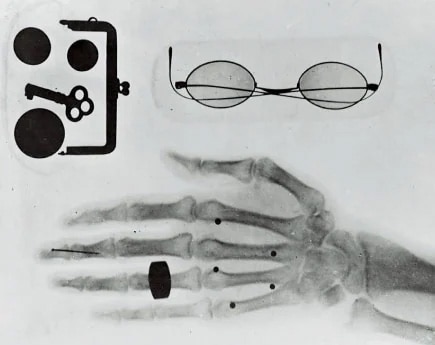Joint Industry-Academia Collaboration Succeeds in Producing an X-Ray Photograph


Series: MOMENTUM
X-rays were discovered by the German physicist Wilhelm Conrad Roentgen in November 1895. In October of the next year, less than one year later, in a distant island country in the Far East, Professor Hanichi Muraoka of the Daisan Senior High School (predecessor to the current Kyoto University) helped his assistant Sosuke Kasuya, collaborator Genzo Shimadzu Jr., and his brother Genkichi successfully produce an X-ray photograph in the laboratory at Shimadzu Corporation, a company located in Kyoto Japan.
Their initial attempts were a series of failures. Due to low performance capabilities of the battery and induction coil equipment, they could not achieve the necessary voltage levels. Therefore, Professor Muraoka suggested using the Wimshurst electrostatic generator that Genzo Jr. had created previously, which was capable of generating instantaneous voltages up to 200,000 volts. By hanging the vacuum tube from the ceiling with silk thread and turning the generator with an electric motor, they were able to generate a continuous discharge of 200,000 volts for several tens of minutes, which resulted in a faint image of a silver one-yen coin inside a wooden box that was placed on the photographic dry plate. This was the first X-ray image obtained by Shimadzu Corporation.
Later, after improvements to the induction coil and vacuum tube and creating their own fluorescent screen, they were able to produce sharp images. Consequently, Shimadzu started manufacturing and selling educational X-ray apparatuses in 1897. Therefore, Shimadzu was the first to pave the way for the practical use of X-ray systems in Japan. In 1909, Shimadzu developed the first Japanese medical X-ray system, which contributed significantly to the advancement of medical care in Japan.
 Copied
Copied

